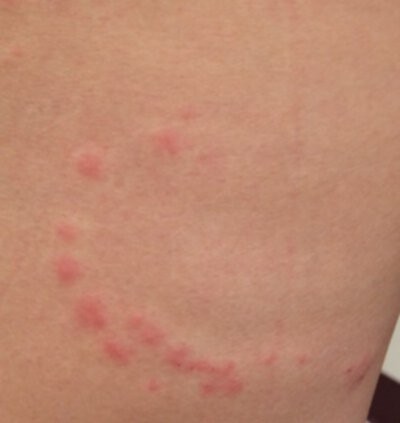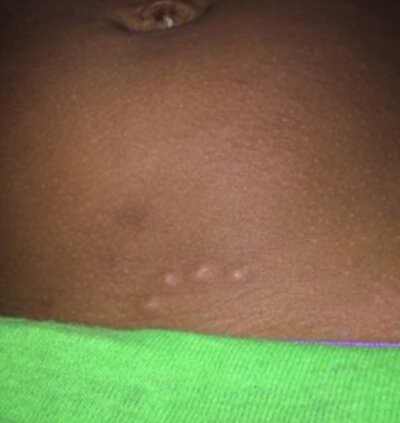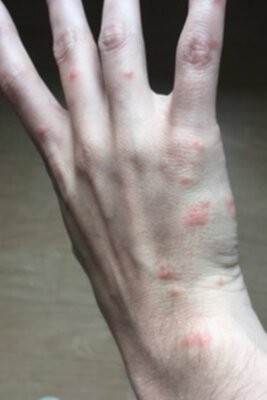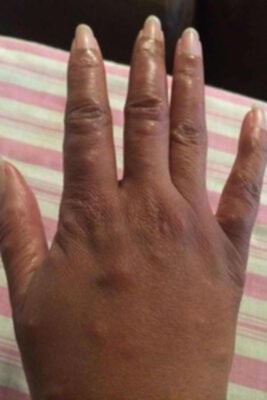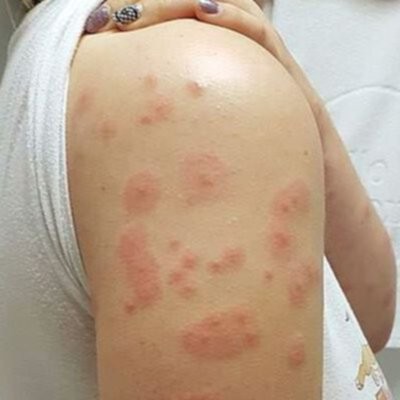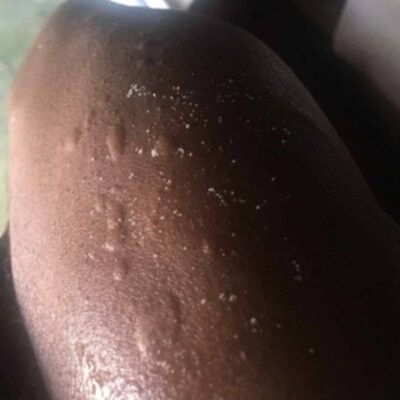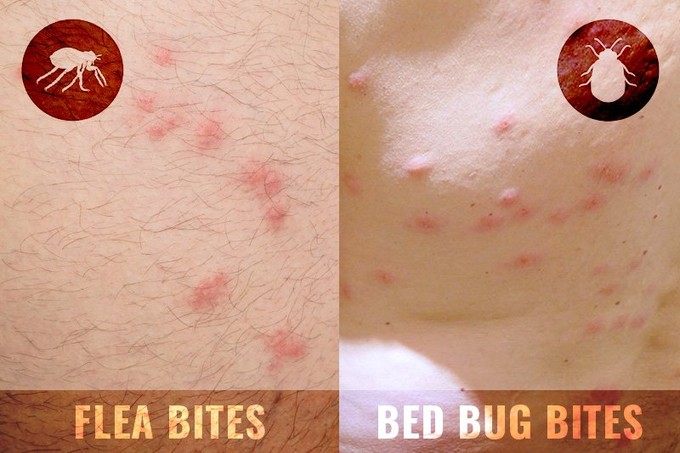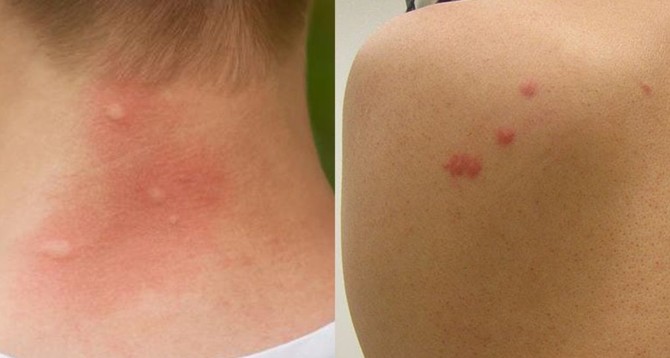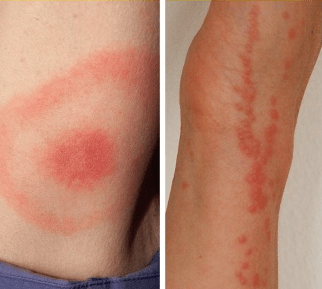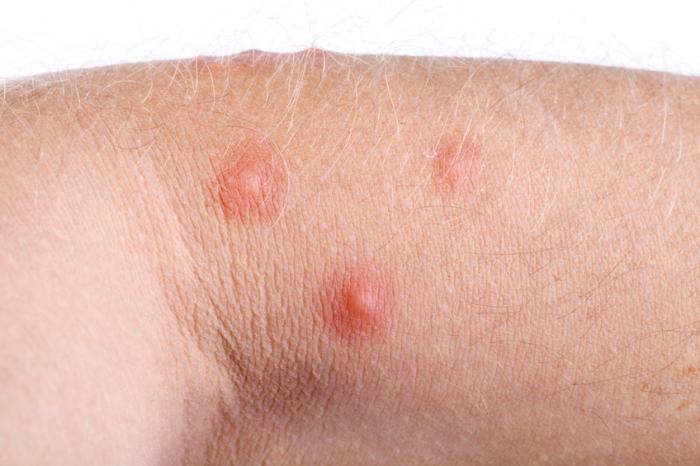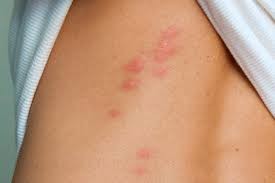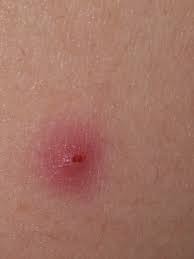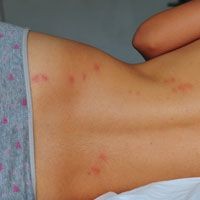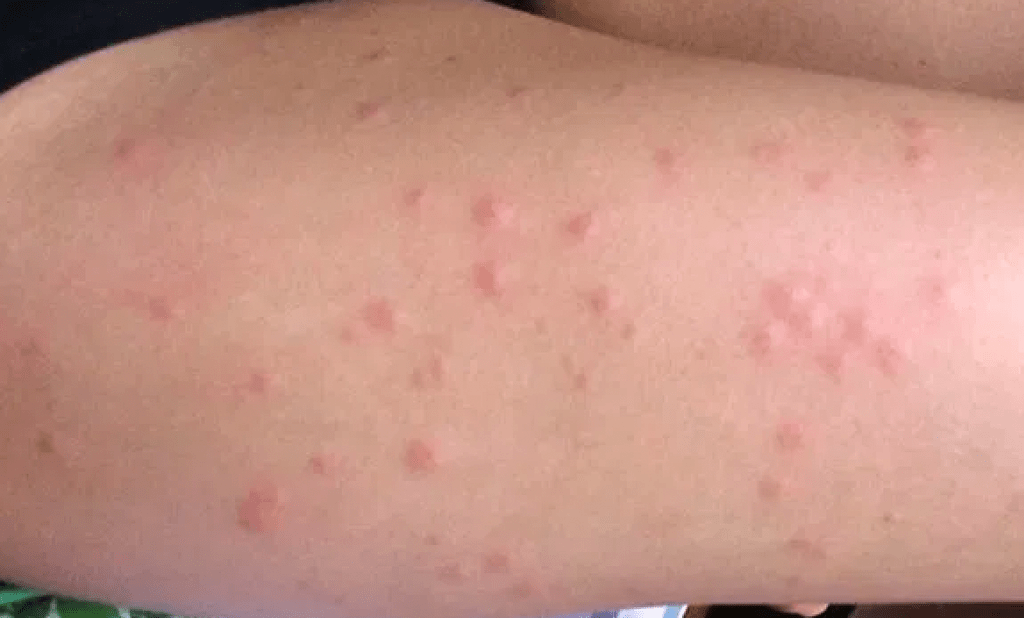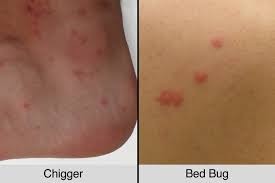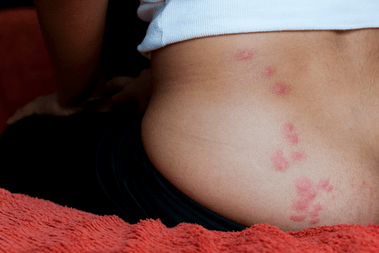Bed bug bites are painless, and therefore, you will likely not wake up. When bitten by bed bugs, some people experience skin irritation and itchiness. Some individuals, however, do not have any reaction to the bites except for the marks on their skin.
Bed bugs rely on blood as their only source of nutrition and are likely to feed on your blood every night. It would be best if you recognized bed bug bites on your skin, considering that you may have no other reactions to them. This article offers an in-depth review of bed bug bites on different skin colors.
Table of Contents
Why do bed bugs bite?
Bed bugs rely on blood for nourishment, so they must bite and suck your blood for continued survival. Blood is rich in nutrients such as vitamins and proteins that offer everything the bugs need for sustenance, reproduction, and growth. A bed bug can survive for up to a year without a host with a proper blood meal.
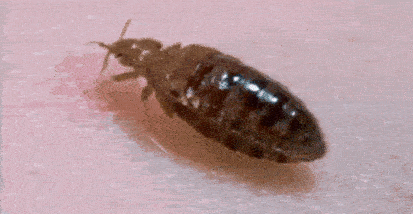
Where do bed bugs bite?
Bed bugs can bite anywhere in your body as long as they can access your blood. Since they mainly feed at night, exposed areas of your skin are more susceptible to bites. Just because they bite exposed areas of your skin does not mean clothing such as pajamas and socks can protect you. When you turn during your sleep, the clothing will likely move to leave some areas of your skin open. Bed bugs can also crawl under such clothes unless they are extra tight.
You cannot feel a bed bug’s bite because it excretes an anesthetic that numbs the pain. Bed bugs often feed through the skin on your:
- Neck
- Face
- Hands
- Shoulders
- Arms
- Legs
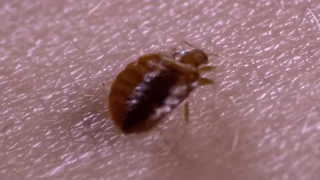
Another point that has been in contention for several years is whether bed bugs bite hairy areas of the skin. Researchers at Sheffield University sought to answer this question by performing an experiment on individuals with shaved and hairy arms. The results showed that bed bugs prefer shaved arms because it is easier to locate blood vessels.
Once a bed bug inserts its mouth part through your skin, it finds a suitable blood vessel and begins sucking blood. Finding the right blood vessel may require several injections through your skin. Bed bugs are also sensitive to movement. If you move slightly, they will withdraw their mouth parts and move to another part of your body. The number of bites on your body is not symbolic of the number of bed bugs that feed on you.
When do bed bug bites?
Bed bugs often bite at night while you are asleep because they are attracted to the carbon dioxide you exhale and the temperature emanating from your body. During the day, they hide in cracks and crevices away from prying eyes. An individual with a massive infestation often suffers more bed bug bites per night than one with a budding infestation. This is why it is prudent to monitor your space for bed bugs and deal with them early.
Who is at risk of bed bug bites?
Bed bugs don’t discriminate, so everyone is at risk of bed bug bites regardless of race, sexual orientation, or social status. They are also not drawn to uncleanliness like most bed bug myth peddlers would like to make you believe. That said, some risk factors expose individuals to bed bug bites.
As per a report in the journal of medical entomology, African Americans have more bed bug infestations than whites. Divergent to what most people would believe, this has nothing to do with race or social status. According to the study, bed bug prevalence in African communities largely stems from congestion.
Apart from living in a congested area, other risks that could expose you to bed bug bites include:
- Apartment complexes
- Dorm rooms
- Homeless shelters
- Hotels and motels
- Cruise ships
- Trains, buses, and other public means of transport
- Refugee camps
What do Bed bug bites look like?(black/white skin)
Bed bugs pierce your skin with elongated mouth parts when feeding. They release an anti-coagulant along with their saliva, making the feeding process painless. You will, however, notice some signs on your skin some hours or days after a bite.
Bed bug bite marks often appear on skin areas left exposed at night. Such parts include hands, shoulders, face, legs, and arms. Unlike most pest bites, bed bug bites are clustered together and may even occur in a line.
Bites from bed bugs look like tiny, red bumps enclosed by blisters or hives. That said, you must remember that your characteristics influence the appearance of the bed bug bite. A bed bug bite on white skin is more pronounced than one on black skin.
It is also essential to note that bed bug bite sizes vary depending on various factors. One of the chief factors influencing the size of a bed bug bite is your skin’s sensitivity to it. The number of times you are bitten also impacts the size of the bed bug bites on your skin.
Bed bug bites versus other pests
It can be difficult to discern a bed bug bite and other pest bites. You should learn to differentiate pest bites considering that a bite is one of the main ways of identifying an infestation. Here is a comparison of a bed bug bite with different pest bites.
Flea versus Bed bug bites
Both pests’ bites appear as small red dots on your skin, making it hard for you to know the difference. Like bed bugs, fleas survive on blood. It is also worth noting that fleas and bed bugs feed away from prying eyes at night.
If you find bites on your face, neck, and arms, you are more likely to be dealing with a bed bug infestation. Bed bug bites are often concentrated on the upper half of the body, while flea bites are on the lower half. Fleas also prefer warm moist areas of your skin, including the bends of the elbows and knees.
Mosquitoes versus Bed bug bites
Mosquitoes and bed bug bites appear similar to an inexperienced eye, but they have some differences. Pinpointing their differences enables you to take the necessary treatment measures. Before we look at the difference between both bites, you should know that mosquito bites only come from females.
Bed bug bites often appear in a cluster and have a distinctive pattern. On the other hand, Mosquito bites are secluded and appear in a random outline. You will also notice a puncture wound in the middle of the red spots if you are dealing with a mosquito.
Ticks versus Bed bug bites
The thought of ticks and bed bug bites tends to send shivers down anyone’s spine. They also share many similarities in appearance, but certain aspects can help you differentiate their bites. Although ticks prefer feeding on mammals, telling the difference between a tick and a bed bug bite is helpful.
Unlike bed bugs that bite repeatedly, ticks bite once. If you see one red pump on your skin, you’re likely dealing with a tick bite. On the other hand, bed bugs leave several red lamps on your skin that appears in a cluster.
Ants versus Bed bug bites
There are over 10,000 species of ants worldwide, some of which can bite, and others are harmless. When bitten by an ant, you may feel a slight pinch and get pink or red spots on your skin after a while. Some species of ants, such as harvester and fire ants, can inject you with poison that may trigger allergic reactions.
In most instances, bed bug bites appear milder on the skin than ant bites. Ant bites often have a noticeable bump or blister. This is primarily because ant venom causes stronger reactions than anticoagulants from bed bugs.
Spiders versus Bed bug bites
Spider and bed bug bites share several similarities, but you can always differentiate them if you observe them keenly. Both bites appear as red, itchy, and swollen spots on your skin, but spiders seldom bite more than once. If you find several bite marks on your skin with a distinct pattern, the chances of finding bed bugs in your space are pretty high.
Head Lice versus Bed Bug bites
Treatments for bed bug bites and head lice differ, so you have to differentiate them. Both bites appear as red, itchy sores on your skin, so differentiating them is all about their location. Since head lice hide on your hair, their bites are limited to your scalp or areas near it and nowhere else. Bite marks that appear in a pattern often on arms and legs result from bed bugs.
Fly versus Bed bug bites
There are six main types of biting flies in the United States of America. The symptoms of their bites tend to vary, but their bite marks have the same characteristics. Like bed bug bites, they appear as red spots on the skin, making it hard for you to differentiate them.
Like bed bugs, flies take several bites on the same area of your skin. Nonetheless, a closer look at a fly bite will reveal a small but visible hole in the center of the red spot. On the other hand, bed bug bites have a characteristic dark spot at the center.
Chigger versus Bed bug bites
Unlike bed bugs which start feeding from the nymph stage to adulthood, chiggers only bite in the larvae stage. There is a possibility of confusion in differentiating their bites although there are some differences in their appearance. Chigger and bed bug bites form red welts on the skin surface. Their difference is that chigger bites often are often focused on the waist area while bed bugs bite on your arms, neck, and abdomen.
Bee Stings versus Bed bug bites
Bee stings are accompanied by instantaneous sharp pain, whereas bed bugs bites are painless. As such, you may not often confuse a bed bite with a bee sting. If you find yourself in such an unlikely scenario, bee stings cause a red welt with a white area around it.
Scabies versus Bed bug bites
People often confuse Scabies and bed bug bites, but there are several differences between them. Bed bug bites appear as red welts clustered in a pattern. Contrariwise, scabies appears as thin, swollen red spots in irregular rows. You will also notice some scales and whitish-gray skin around the bitten spots.
Carpet beetles versus Bed bug bites
Carpet beetles do not bite but cause red, itchy bumps on the skin, similar to bed bug bite due to prickly hairs on their larvae. Allergic reactions from carpet beetles appear as random red dots on your skin, whereas bed bug bites occur in a pattern.
Bed bugs bites vs infections
Chickenpox versus Bed bug bites
People often get confused about the difference between chickenpox and bed bug bites. First, you have to understand that chickenpox does not stem from a bite but is an infection caused by the varicella zoster virus. Its symptoms are often mistaken for bed bug bites because they appear as red, small welts on the skin.
Knowing how to tell the difference between them is crucial because it helps you formulate the right treatment plan. With chickenpox, you will realize that the red spots will spread over your body over time. On the other hand, bed bug bites will not multiply and spread across your body. Blisters from bed bug bites will also remain simple, whereas those arising due to chickenpox will fill with fluid.
Shingles versus Bed bug bites
You can mistake shingles for bed bug bites during their early stages due to their similarity in appearance. The early stage of shingles appears as small, red itchy bumps similar to bed bug bites. Nonetheless, with shingles, the red spots will develop fluid-filled blisters and, eventually, a crust. Shingles marks also appear on the waist area and are accompanied by localized pain.
How to deal with the bites?
Most individuals tend to panic upon recognizing a bed bug bite. You cannot think clearly when panicking, and you might make mistakes when dealing with bed bugs. Here are some guidelines for dealing with bed bug bites:
Removing the bed bug infestation
The first and most crucial step in managing bed bug bites is removing the infestation. It will help you avoid future bites. You must check your home for bed bugs and implement effective treatment methods such as heat treatment. It would also be wise to scrub your furniture, vacuum the house, and fix any cracks that provide hiding spots.
Controlling itching
When bitten by bed bugs, you are likely to develop itching around areas with red bumps. Several over-the-counter pharmaceuticals can help control itching associated with bed bug bites. Diphenhydramine and hydrocortisone are ointments that you can apply to the bites to control itching.
It’s important not to scratch the area as it may leave a scar.
How long does a bite last?
Most people do not develop apparent symptoms other than the occasional red spots and irritation on the skin. Some people may be hypersensitive to the bites, this includes enlarger bit marks, painful swellings, and on rare occasions, anaphylaxis. Bed bug bite symptoms often develop days after getting bitten and resolve after a week or two.
When to see a doctor?
Most bed bug bites heal upon applying some self-care remedies, but some instances may require you to see a doctor. Here are some scenarios that require you to see a doctor:
- When rash associated with bed bug bites persists or becomes infected
- When you develop a severe allergic reaction to the bites
Final Thoughts
Preventing bed bug infestations is challenging because they spread through unavoidable daily activities such as traveling. Bed bug bites are time and again the first sign of an infestation, so identifying them is essential for early treatment. The visual illustrations of different bites and their descriptions will make it easy for you to identify bed bug bites.
FAQs
How do you know if bites are from bed bugs?
Unlike other pests, bed bug bites are grouped and appear in a distinctive pattern. To confirm if it’s a bed bug’s bite, check your room for other signs of an infestation.
What can you mistake for bed bug bites?
Any pest bite that looks like a small red bump on the skin can be mistaken for a bed bug bite. Bites from common pests such as fleas, mosquitoes, and ticks trigger red welts on the victim’s skin.
What could be biting you at night if not bed bugs?
Female mosquitoes and bed bugs predominantly feed at night. If you find bite marks in the morning, they may be from mosquitoes.
At what stage of their growth do bed bugs bite?
A bed bug’s life cycle consists of three stages: egg, nymph, and adult. Bed bugs start feeding at the nymph stage, which comprises five phases.
Can bed bugs live without biting us?
Adult bed bugs can live for up to one year in optimum conditions without feeding, but they will not lay eggs during that period. Bed bug Nymphs, on the hand, cannot shade their exoskeletons and move to their next growth stage without feeding.
Bed bugs prefer feeding on us, but they can feed on other warm-blooded animals, including dogs, cats, birds, and rodents.
Why do bed bugs bites mostly while we are sleeping?
Bed bugs bite when you are asleep because you make minimal movements, allowing sticking to a blood vessel and feeding. These pesky critters are also attracted to carbon dioxide, which often forms a cloud around you when asleep due to less ventilation and movement.

